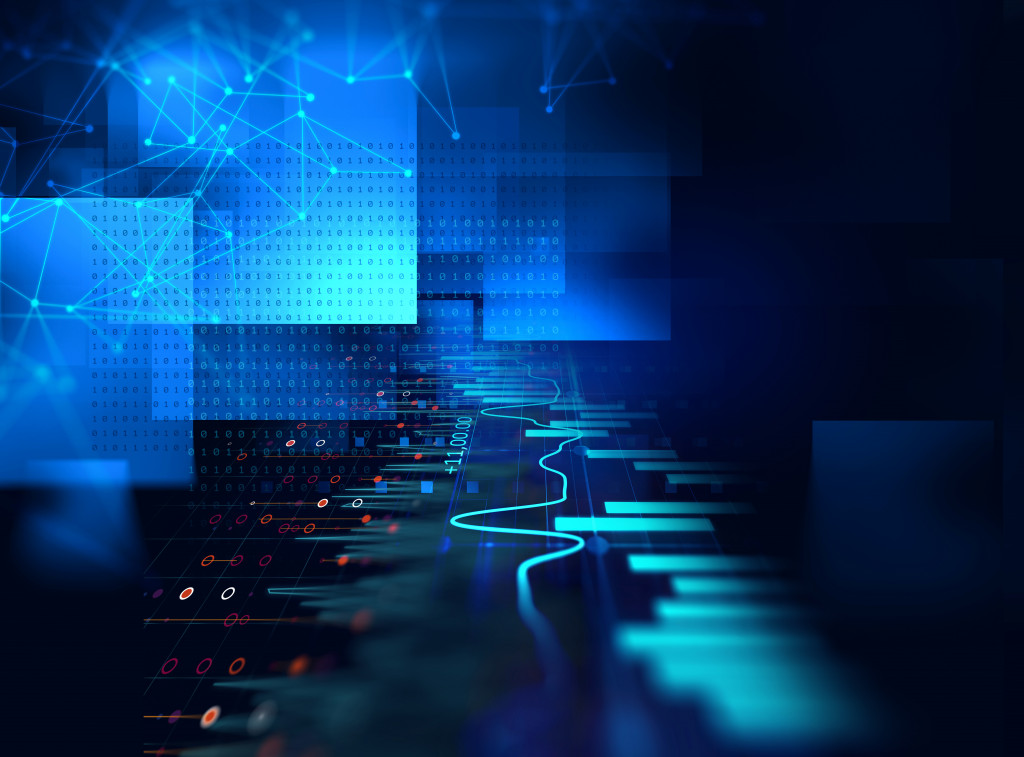It’s the first year of the second decade of the 21st century. While science fiction has exaggerated much of what they expect 2021 technology to be, we’ve still achieved many of their fantasies, albeit in a different way. Let’s take a quick look at the tech trends this 2021 and how they can affect everyone’s lives.
Machine Learning Across Different Industries
Without a doubt, artificial intelligence is among the most awaited developments. Since the dawn of time, humans have wondered about intelligent machines. They’ve finally arrived, although in a form we’re not exactly expecting. AI is being utilized to collect and analyze critical data in different fields and industries.
Many of these industries are critically needed and are of high importance, like healthcare and finance. Infection rates, success ratio, contact tracing, proximity, and population calculations are all being done through an AI analysis. That is something that’s in dire need during this time of a pandemic. In the field of finance, investors and financial analysts utilize AI to study economic history and understand the patterns that may come up.
Machine learning is beginning to be implemented in many other industries as well, like urban design. Cities are employing machine learning to analyze the urban landscape and to improve its design and ergonomics. Customer service systems are using chatbots to provide answers to the most commonly-asked questions.
Perhaps in the future, we’ll see the lack of need for human interference for basic and repetitive tasks. This is because AI can accomplish them much more efficiently.
Robots, Drones, and Flying Cars?
We’ve come a long way from what cars and vehicles were a hundred years ago. From the first Ford Model T to the self-driving Tesla cars of today, the innovations and developments within the automotive industry have been on consistent progress these past few years.
Not just the automotive industry, but there are also small transportation devices such as drones and even experimental flying cars. The technological improvements are multi-faceted and not just within one aspect. Autonomous vehicles that use real-time analysis of GPS maps, environment analysis, and driver feedback are becoming popular. GPS tracking devices for cars often come prepackaged with purchases from dealerships.
Fuel efficiency is on a roll. The developments are continuously arriving, to the point that electric vehicles are becoming a viable alternative to conventional fuel-fed vehicles. Drone technology is also catching up, with many businesses eager to utilize drones for same-day delivery schemes, and fringe developers are even using them to develop flying vehicles. Indeed, the second decade of the 21st century is turning out to be promising in the field of tech.

The Significance of 5G
The Internet heralded a new age, one that can connect to different people from different locations all over the world. It has bridged relationships, both personal and professional. It became a window for opportunities and has even spawned an entirely new industry. Needless to say, the importance of the Internet cannot be understated.
The arrival of the fast Internet hammered its importance even more. With faster speeds, people can do more, process more information, do more tasks, and be more efficient. And now, we’re in the 5th generation of mobile networks, kilobits, then after a few years, megabits.
But now, it’s measured in the gigabit range, and 5G is promising an upward of 20 Gigabits-per-second. This is almost a hundred times faster than 4G and is expected to make thousands of internet-reliant tasks easier. Video conferencing calls will be smoother, distance controlling of IoT equipment will have less latency, and even working via the cloud will all be possible.
How “As-A-Service” Is Revolutionizing Tech Awareness and Accessibility
From food apps like DoorDash or Postmates to ridesharing apps like Uber and Lyft, and even video streaming apps like Amazon Prime and Netflix, software as a service (or SaaS) has become among the most viable forms of business in recent times. SaaS offers individuals and companies access to a variety of products and services not ordinarily available through the convenience of smartphone apps. It helps individuals save time and money, with the added layer of convenience.
Even businesses benefit significantly from software services. They gain access to problem-solving tools, making their workflow more efficient and productive. Of course, this increase in quality of life is all thanks to the developments within the software and smartphone industry, creating an entirely new niche that brings value to people’s lives.
Technology will continue to impact our lives. But whether this impact will be positive or negative is entirely up to us. We need to be responsible for its usage, and part of that is knowing what we can use to enrich our experience.
